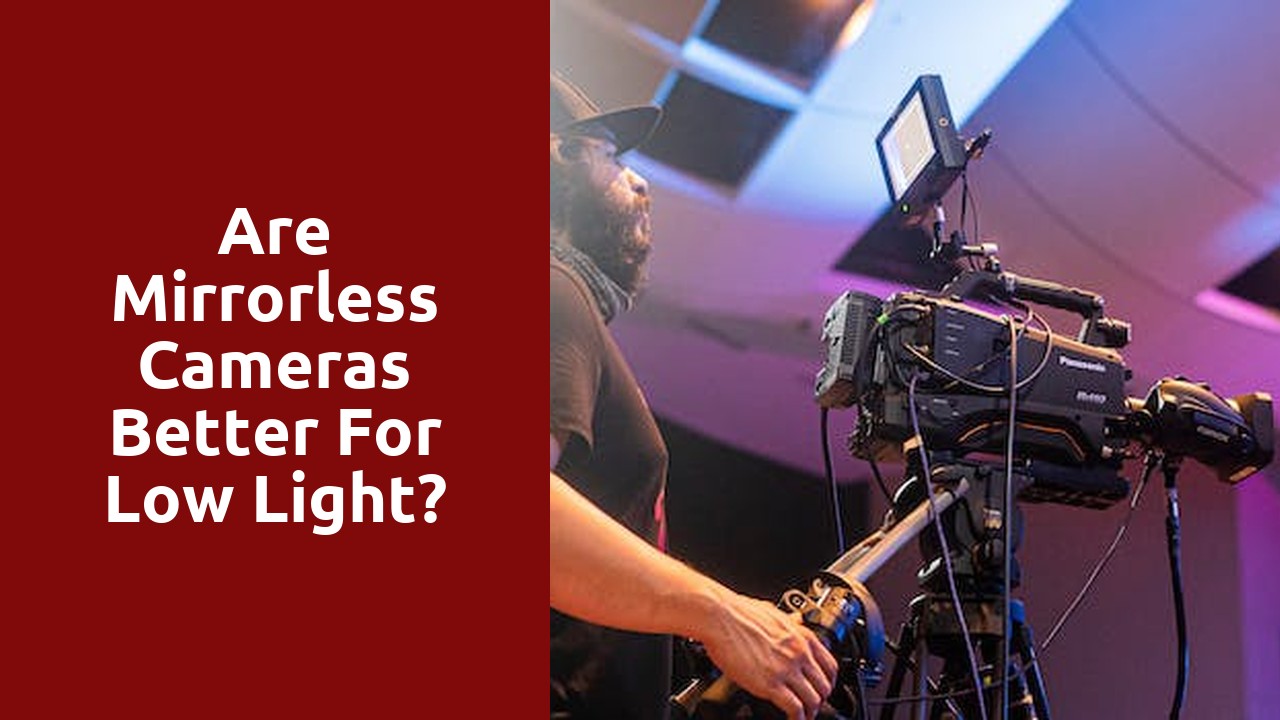Are mirrorless cameras better for low light?

Mirrorless cameras are often thought of as better options for low light photography because they have smaller and less bulky bodies than traditional cameras. This means that they can be more easily carried and used in difficult or low light situations. Additionally, mirrorless cameras often have sensors that are better at capturing light and detail than those on traditional cameras.
Definition of mirrorless cameras
Mirrorless cameras are typically smaller and lighter than traditional cameras, making them better for shooting in low light conditions. They also have a number of features that make them more versatile, such as the ability to use autofocus in low light and the ability to take pictures in burst mode.
Overview of low light photography
Mirrorless cameras are often thought of as better options for low light photography because they have smaller and less bulky bodies than traditional cameras. This means that they can be more easily carried and used in difficult or low-light situations. However, there are a number of factors to consider when choosing a low light camera, including the type of lens and sensor, and the camera's overall capabilities.
Advantages of Mirrorless Cameras for Low Light Photography
Mirrorless cameras are often seen as a better option for low light photography because they have a smaller sensor size and lack a mirror. This means that the camera can take more light in to photograph, resulting in a better image. Additionally, mirrorless cameras often have faster autofocus and are generally more responsive than traditional cameras.
Smaller size and weight
Mirrorless cameras are often thought of as being better for low light photography because they have smaller size and weight. This is partially true, but there are other factors to consider when choosing a camera for low light photography. For example, a mirrorless camera may have a better sensor that can capture more light and produce better images.
Improved autofocus
Mirrorless cameras have improved autofocus capabilities, making them better suited for low light photography. Additionally, they often have sensors that are larger than those found in traditional cameras, which allows for better image quality.
Better image quality
Mirrorless cameras are often thought of as being better for low light photography because they have sensors that are smaller and have more light gathering capabilities. This means that they can take better photos in low light situations. However, there are some mirrorless cameras that are also great for taking photos in high light situations. So, it really depends on the camera you are using and the type of photography you are trying to do.
Disadvantages of Mirrorless Cameras for Low Light Photography
Mirrorless cameras are often seen as a better option for low light photography because they have a smaller sensor size and lack a mirror. This allows for a more compact and lightweight camera body, which can be helpful when shooting in low light conditions. However, there are some disadvantages to using a mirrorless camera in low light situations. First, because they lack a mirror, mirrorless cameras often have less accurate autofocus and are less able to capture detail in dark areas. Additionally, because mirrorless cameras do not have a built-in flash, they may require additional lighting to capture clear photos in low light.
Higher cost
Mirrorless cameras are often thought of as being better for low light photography, as they have a smaller sensor size which results in less noise and a better image quality. However, this is not always the case - some mirrorless cameras, such as the Panasonic Lumix DMC-GH4, have a higher cost than traditional DSLRs, and may not be the best option for those who are on a budget.
Limited lens selection
Mirrorless cameras are great for capturing photos and videos in low light because they have a limited lens selection. This means that you are limited to the lenses that are included with the camera. This can be a good thing because it means that you are not likely to miss important details in your photos or videos because you cannot use a lens that is better suited for low light conditions.
Mirrorless cameras are often thought of as being better for low light photography, as they have a smaller sensor size which results in less noise and a better image quality. However, this is not always the case - in fact, some mirrorless cameras are just as good or even better in low light situations than traditional cameras. It all comes down to personal preference - if you're happy with the image quality of a traditional camera, then a mirrorless model won't necessarily be a better choice for you.
Summary of advantages and disadvantages
Mirrorless cameras are often seen as being better for low light photography because they have a smaller sensor size which results in less noise and a higher resolution. However, they do have their own set of disadvantages, such as the fact that they can be more difficult to use in low light situations.
Recommendation for low light photography
If you're looking to take great low light photos, a mirrorless camera is a great option. They typically have better image quality and are more responsive than traditional cameras.
Related Links
Is Canon or Nikon better for night photography?What is low light performance camera?